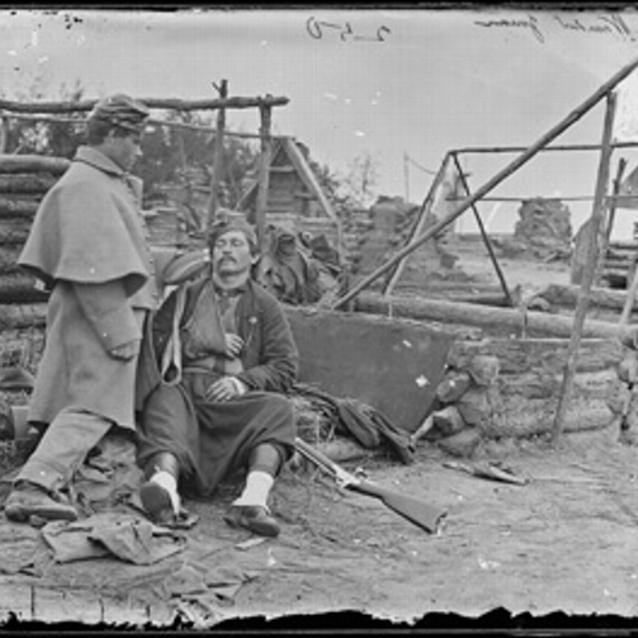At the beginning of the Civil War, the practice of medicine was emerging from an era in which bleeding, cupping and purging were still practiced but were declining. Medical practitioners did not know the exact cause of many diseases or the mechanisms of infection, but they were beginning to understand the benefits of cleanliness and good sanitation in disease prevention and healing.
Unless struck in the head or about the heart, men mortally wounded live some time, often in great pain, and toss about upon the ground." Soldier from the 35th Massachusetts
What Medical Practitioners Did Not Know

Library of Congress
By the 1850s, there were over forty medical schools in the United States and physicians typically received some sort of medical education. Many students supplemented their medical school instruction by apprenticing with a practicing physician. During the war, both Union and Confederate surgeons had to pass an exam to be appointed to their positions, helping to ensure an adequate level of care for the soldiers.
Surgeons stressed the importance of sanitation and cleanliness, but putting their ideas into practice was difficult. Camp life was often more dangerous to the soldiers than the battles. Two out of every three deaths in the Civil War were caused by disease rather than injury. Adequate nutrition, camp cleanliness, and preventative measures, such as smallpox vaccination and the use of quinine to prevent malaria, were all used in an attempt to lessen the toll of disease.
The First Battle of Manassas was the first major combat of the war. In the aftermath of the battle, startling numbers of killed and wounded shocked the nation and overwhelmed the medical establishment. Most doctors treating men there were seeing gunshot wounds for the first time. By the time of the Second Battle of Manassas, both the Union and Confederate medical departments were better prepared. Still, what waited for them along the banks of the Antietam tested their strength and skill.
On September 17th, 1862, the two armies clashed near Sharpsburg, Maryland in the Battle of Antietam. On that one day, over 23,000 men were killed, wounded, or listed as missing. Medical personnel from both armies, civilian organizations, local people, and the relatives of the wounded joined together to treat those men who had suffered wounds on the various battlefields.
Blood on the Battlefield

Library of Congress
Wounded soldiers often lay on the battlefield for hours as the combat swirled around them. If they were lucky, litter-bearers picked them up and carried them behind the lines.
As battle raged nearby, an assistant surgeon and a steward often provided the first level of care to a wounded soldier. At a field dressing station--often behind the cover of a few trees, rocks or in a slight depression in the ground-- medical personnel cared for the wounded. Here, soldiers had their wounds bandaged and might be given whiskey to combat shock or morphine to stop the pain. If the soldier was unable to return to the battle, he would be transported from the field dressing station to an aid station or field hospital via an ambulance or stretcher.
Minie Ball

NPS
During the Revolutionary War and the War of 1812, soldiers primarily used smooth-bore muskets, which fired a round lead ball that usually broke the skin and shattered a bone. Civil War soldiers carried rifled muskets and new ammunition called a Minié ball. The faster and more accurate Minié ball could splinter bone and cause massive damage to the tissue around the wound.
Approximately 94% of all Civil War injuries treated by surgeons were caused by the Minié ball. The extensive trauma caused by the Minié ball often made it necessary for surgeons to perform amputations, since repairing the damage was either impossible or not prudent due to lack of time and the likelihood of infection. In the Union army, three out of every four operations performed in field hospitals were amputations.
Part of a series of articles titled A Most Horrid Picture.
Last updated: August 15, 2017
